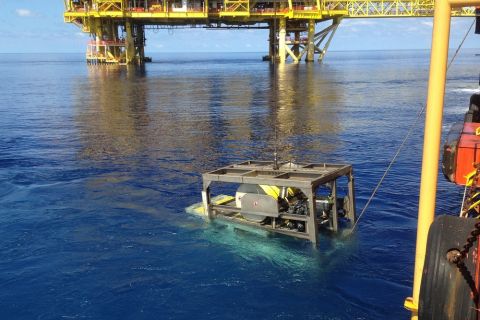ExxonMobil has confirmed a US $4 Bn development program is now underway for the first phase of its large ultra-deepwater Julia oil field in the Gulf of Mexico.
This initial phase is being treated very much as a learning period that will provide the operator with crucial reservoir production behaviour, DI hears. It is understood that ExxonMobil and its joint venture partner Statoil already have later phases on the drawing board for Julia for future implementation, utilising state-of-the-art enhanced oil recovery technologies (such as subsea boosting and compression) still under development.
Statoil is a world leader in such technologies, with an average reservoir recovery factor for its Norwegian fields of more than 50% - something that on a field as large as Julia (nearly 6 Bn bbl of reserves in place) would make a massive economic difference.
ExxonMobil has already issued the engineering, procurement and construction contracts for the project, with FMC Technologies confirming it has received the subsea equipment order for six subsea trees, a manifold and associated tie-in equipment.
Julia lies in approximately 2,100 m (7,000 ft) of water, with the field to be tied back subsea via six wells to the producing Jack & St. Malo production facility 15 miles away operated by Chevron.
The initial development phase is designed to achieve a daily oil production of 34,000 bbl, with startup planned for 2016.
The capital cost for the first phase development of the field was put by the operator at more than $4 Bn. Julia, discovered in 2007, is contained within five leases in the Walker Ridge area (WR-584, WR-627, WR-628, WR-540 and WR-583).
ExxonMobil and partner Statoil each hold 50%. Statoil also holds a stake in Jack-St.Malo.
ExxonMobil has drilled 36 deepwater wells in the GoM in the past decade in water depths ranging from 1,219-2,652 m (4,000-8,700 ft).
Jason Nye, senior vice president, Statoil U.S. Offshore, said: “Julia has a substantial long-term production potential which is expected to be fully realised through the application of technology to unlock its full potential.”
Statoil, a big proponent of EOR technologies such as seabed boosting and processing, estimates the lifetime of the Julia field at up to 40 years.
Recommended Reading
Betting on the Future: Chevron Technology Ventures’ Investment Strategy
2024-04-09 - After a quarter century, Chevron Technology Ventures seeks both incremental and breakthrough technologies with its early-stage investment program.
Forum Energy Signs MOU to Develop Electric ROV Thrusters
2024-03-13 - The electric thrusters for ROV systems will undergo extensive tests by Forum Energy Technologies and SAFEEN Survey & Subsea Services.
AI Advancing Underwater, Reducing Human Risk
2024-03-25 - Experts at CERAWeek by S&P Global detail the changes AI has made in the subsea robotics space while reducing the amount of human effort and safety hazards offshore.
Lift-off: How AI is Boosting Field and Employee Productivity
2024-04-12 - From data extraction to well optimization, the oil and gas industry embraces AI.
AI in Oil: Revolution’s Coming, but Tech Adoption Remains Tentative
2024-04-05 - CERAWeek experts say AI will disrupt oil and gas jobs while new opportunities will emerge as the industry braces for an AI-driven workflow transformation.





